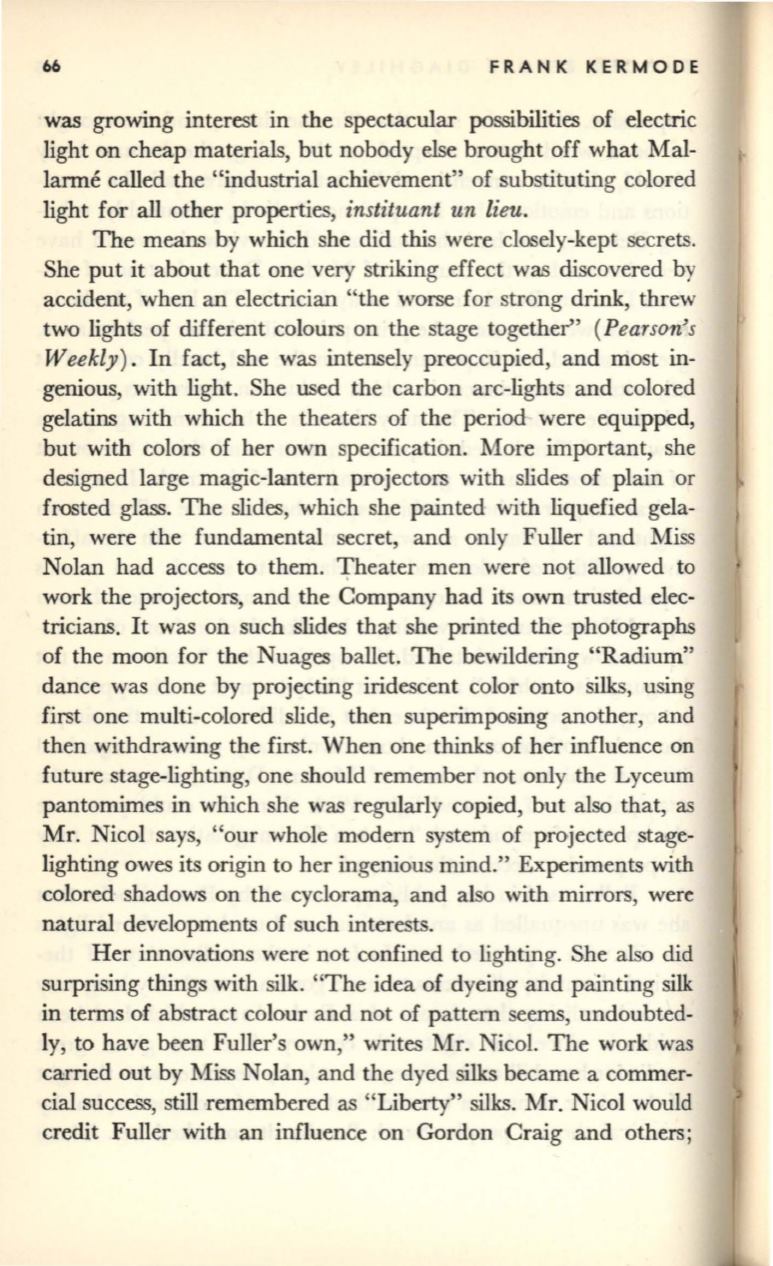
66
FRANK KERMODE
was growing interest in the spectacular possibilities of electric
light on cheap materials, but nobody else brought off what Mal–
larme called the "industrial achievement" of substituting colored
light for all other properties,
instituant un lieu.
The means by which she did this were closely-kept secrets.
She put it about that one very striking effect was discovered by
accident, when an electrician "the worse for strong drink, threw
two lights of different colours on the stage together"
(Pearson's
Weekly).
In fact, she was intensely preoccupied, and most in–
genious, with light. She used the carbon arc-lights and colored
gelatins with which the theaters of the period were equipped,
but with colors of her own specification. More important, she
designed large magic-lantern projectors with slides of plain or
frosted glass. The slides, which she painted with liquefied gela–
tin, were the fundamental secret, and only Fuller and Miss
Nolan had access to them. Theater men were not allowed to
work the projectors, and the Company had its own trusted elec–
tricians. It was on such slides tha:t she printed the photographs
of the moon for the Nuages ballet. The bewildering "Radium"
dance was done by projecting iridescent color onto silks, using
first one multi-colored slide, then superimposing another, and
then withdrawing the first. When one thinks of her influence on
future stage-lighting, one should remember not only the Lyceum
pantomimes in which she was regularly copied, but also that, as
Mr. Nicol says, "our whole modern system of projected sta:ge–
lighting owes its origin to her ingenious mind." Experiments with
colored shadows on the cyclorama, and also with mirrors, were
natural developments of such interests.
Her innovations were not confined to lighting. She also did
surprising things with silk. "The idea of dyeing and painting silk
in terms of abstract colour and not of pattern seems, undoubted–
ly, to have been Fuller's own," writes Mr. Nicol. The work was
ca:rried out by Miss Nolan, and the dyed silks became a commer–
cial success, still remembered as "Liberty" silks. Mr. Nicol would
credit Fuller with an influence on Gordon Craig and others;


